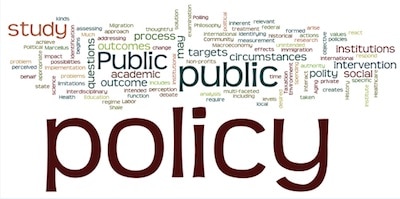Last Updated on September 18, 2023 by Lawrence Berezin
NYC parking tickets and policy
Parking ticket fines generate about $600M per year. What’s worse, bad policy or unjust parking violations? Or are they co-dependent?
“The dysfunction caused by poorly conceived parking policies is a major impediment to creating an effective and balanced urban transportation system. It is also a significant cause of traffic and air pollution.”
“U.S. Parking Policies: An Overview of Management Strategies.”
(Institute for Transportation and Development Policy), Rachel Weinberger, John Kaehny, Matthew Rufo.
Once upon a time, a long time ago, the automobile was king. It was the preferred mode of travel and usually ended up at a destination with free parking. Meanwhile, zoning laws forced developers to create the smallest parking spaces with each new development.
Meanwhile, that was then. This is now.
Likewise, today, many stakeholders are fighting about allocating urban space, for example:
- Livable Streets: Advocates fight for a more livable environment in our cities. You may wish to check out Streetsblog NYC (including street education and street films). Professor Donald Appleyard. Transportation Alternatives.
- Bicycling: N.Y. Velocity (advocate for biking challenges), Streetsblog NYC. There is an interesting “conversation” between the N.Y. Post and Streetsblog.org about an article published in the N.Y. Post on Monday about bicyclists.
- Pedestrian access to safe streets: NYC Department of Transportation sponsors a gaggle of initiatives, pilot programs, and studies
- Bus Lanes: More rules, more enforcement. For example, bus lane cameras.
- NYC driving public: NYC Council Member Ydanis Rodriguez, NYC Council Member David Greenfield, NYC Council Member Daniel Drumm, NYC Council Member Daniel Halloran, Assemblyman Michael DenDekker, among others, New York Parking Ticket, LLC (That’s us…Yea!).
In other words, the high housing price and the cost of parking tickets make urban auto ownership very expensive.
The automobile may become an urban dinosaur.
With a growing number of people forcefully advocating for inclusion in the urban planning conversation, bus lanes, bike lanes, and pedestrian safety initiatives are sprouting up. Here are some parking facts of life in NYC, as reported in a terrific study entitled, U.S. Parking Policies: An Overview of Management Strategies (Institute for Transportation and Development Policy), Rachel Weinberger, John Kaehny, Matthew Rufo:
New York City is the largest, densest, most transit and pedestrian-oriented city in the United States. It is the only U.S. city where most households do not have a car. Despite this, New York City is very much an American city in the way it under-prices and underuses curbside parking meters. Meter rates are far lower than in other leading world cities, and New York suffers from high levels of cruising and double parking. However, on most NYC streets, parking is free.
Only a tiny percentage of New York streets have parking meters (the city has 32 percent fewer meters per head than Chicago, for example). Likewise, all are on retail strips and in the Manhattan Central Business District.
Like other U.S. cities, curbside parking rates in New York City are determined mainly by politics, not by policy goals.”
Read on
Here are three curbside parking initiatives sponsored by NYC:
- NYC Commercial Congestion Parking Program. In 2000, the NYC DOT began metering commercial parking in the CBD (“Commercial Business District”) using escalating hourly rates and modern, multi-space “Muni-meters.” By 2009, the NYC Commercial Congestion Parking Program had steadily expanded to include about 8,000 curbside parking spaces available only to commercial vehicles. The meters cover a two-by-one-half mile swath of Manhattan from 60th Street to 14th Street. Rates for commercial vehicles are $2 for the first hour, $3 for the second, and $4 for the third hour. Muni meters accept coins, credit cards, and pre-paid parking cards. DOT internal studies show commercial parking availability has increased, and double-parking and overall traffic delays have decreased.”
Keep Reading
- ParkSmart. In October 2008, the NYC DOT introduced ParkSmart at 281 metered spots in Manhattan’s transit- and pedestrian-oriented Greenwich Village. ParkSmart is an opt-in program in which DOT approaches community planning boards and asks for their participation. The articulated goal of the program is to increase curbside availability and cut circling and double parking. By 2014, ParkSmart will include six neighborhood pilot programs encompassing 1,500 to 2,000 existing meters and no new meters. In May 2009, a second pilot began in Park Slope, Brooklyn. During the six-month trial period in Greenwich Village, DOT raised meter rates from $1 to $2 an hour during the peak 12 p.m. to 4 p.m. period. The project was well received by the public, and the rates have been adjusted to $3 since then, reducing curbside occupancy during peak times. All the meters are programmed to allow a maximum of one paid hour, which limits the convenience of meter feeding for an extended period. “ParkSmart is noteworthy because it is a thoughtful, sustained effort by a major city to change public attitudes towards higher meter rates.” U.S. Parking Policies, supra at p.64. The DOT is well aware of the problems caused by underpriced curbside parking. Well-publicized studies by the advocacy group Transportation Alternatives found that circling for parking accounted for 28 percent of vehicular traffic in Lower Manhattan’s Soho neighborhood and 45 percent of traffic in Park Slope, Brooklyn. However, neighborhood political resistance to raising meter rates remains very high. DOT hopes that positive results in ParkSmart neighborhoods will help create a new public consensus throughout the city that higher meter rates are a benefit. Grand Street Protected Bicycle Lane
Using curbside parking to protect bicyclists
Don’t stop now.
- On Lower Manhattan’s Grand Street, the NYC DOT used on-street parking to create a low-cost, protected bicycle lane. The DOT moved curbside parking to the first traffic lane and painted a curbside lane. The project is a model for how to quickly reprogram road space freed up when on-street parking is properly priced. Eliminating circling and double parking creates substantial excess street capacity, which can be reprogrammed for bicyclists and pedestrians or will otherwise draw more through traffic.
FREE Download

U.S. Parking Policies: An Overview of Management Strategies (Institute for Transportation and Development Policy), Rachel Weinberger, John Kaehny, Matthew Rufo. [Larry’s note: Incredibly terrific, must-read study if you own a car or venture outside from your apartment/house/condo in NYC. 86pps].





Is there somewhere I could find a list of the parking spaces part of the Commercial Congestion Parking Program and/or for bus layovers? We received a ticket for parking a minibus in Queens near a MuniMeter, but he wrote “Parked bus ex desig area.” Can we not park near a MuniMeter unless the parking sign specifically indicates commercial vehicles? If this is the case, the City is doing a wonderful job making sure people don’t know where we can park (outside Manhattan).
–Greg
Greg,
Good afternoon.
Here’s a link for…
Authorized Bus Layover Locations in Manhattan
http://www.nyc.gov/html/dot/downloads/pdf/buslayoverloc.pdf
I hope this helps.
Best,
Larry